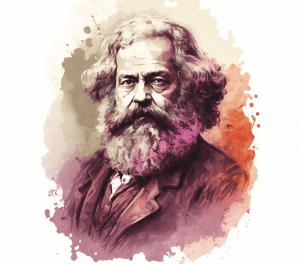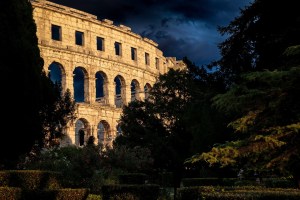We support our Publishers and Content Creators. You can view this story on their website by CLICKING HERE.
Despite the thematic richness inherent in Tolkien’s stories, Stratford Caldecott helps us glimpse their unified background, one inspired by the author’s Catholic Credo. We thus receive a new proof of what it means for a work of art to be Christian, not so much in content as in spirit.
Alongside authors such as Joseph Pearce, Bradley Birzer, Verlyn Flieger, Michaël Devaux, and Thomas Shippey, Stratford Caldecott (1953-2014) decisively contributed to enriching that discipline known as “Tolkien studies.” Born in London on November 26, 1953, he was educated at the University of Oxford where he studied philosophy and psychology. After settling permanently here with his wife, Leonie, he dedicated himself to popularizing Catholic theology and pedagogy through the esteemed journal Second Spring. A professional writer associated with major publishing houses such as Routledge, HarperCollins, and T&T Clark, editor of the journals Communio and The Chesterton Review, he distinguished himself with a seminal monograph dedicated to the creator of hobbits. Titled Secret Fire: the Spiritual Vision of J.R.R. Tolkien, Caldecott’s contribution elegantly elucidates the main themes of Tolkien’s works. Seeking to offer his own response to the challenge posed by the immense public success of the (high) fantasy literary genre, Caldecott emphasizes the attraction to the heroic model latent in the souls of modern individuals overwhelmed by technology and bureaucracy:
The Lord of the Rings may be read… as an exciting story that spectacularly revives an almost-extinct literary genre. But it can also enjoyed in other ways: as an extended meditation on what it means to be English, or as an imaginative response to the experience of modern warfare, or as a moving evocation of the intimate relationship between love and heroism…. It can be read, too, as an exploration of the roots of human language and consciousness.[1]
Admitting the possibility of a plurality of readings applied to Tolkien’s works, Caldecott considers the theme of fire present in the heart of the cosmos conceived by God-Ilúvatar as crucial. This theme represents not only the nucleus of a work and a poetic vision but the very core of the author’s life. Presenting Tolkien’s biography, Caldecott identifies three guiding threads that, closely intertwined, have generated an experience that lay at the foundation of his creation. The first is the love for Edith, the woman who would become his wife. The second is represented by the tumultuous experience of the First World War, in which he himself participated, as well as the Second World War, in which his son, Christopher, participated. Finally, the strong connection with the intellectual-formative environment of the University of Oxford constituted the framework for the crystallization of his vision.
Tolkienian literature is deciphered starting from the cosmology which, influenced by the Judeo-Christian paradigm but also by motifs borrowed from Norse mythology, offers an image of the world present throughout the entirety of the work. Demonstrating a remarkable coherence, Caldecott’s monograph approaches in the same mytho-cosmological key subjects ranging from the heroic ethics of characters like Gandalf or Aragorn, the presence of certain motifs of Christian origin (especially the “icon” of the Virgin Mary transposed onto certain female characters), or the sacred nature of the universe, to the original music of divine origin, the issue of immortality, and the social philosophy of Middle-earth.
Despite the thematic richness inherent in Tolkien’s stories, Stratford Caldecott helps us glimpse their unified background, one inspired by the author’s Catholic Credo. We thus receive a new proof of what it means for a work of art to be Christian, not so much in content as in spirit. Convinced that the Christian religion has not abolished mythopoeia or poetic knowledge but has made possible a new era of a “baptized mythology,” Tolkien reveals himself as an authentic herald of hope, inscribing himself in the gallery of authors such as Don Miguel de Cervantes y Saavedra, Gilbert Keith Chesterton, Georges Bernanos, or Nicolae Steinhardt.
In a brilliant essay titled “The Lord & Lady of the Rings: The Hidden Presence of Tolkien’s Catholicism in The Lord of the Rings,” Caldecott reveals the discreet presence of some specific Christian themes in Tolkien’s opus magnum. Without being a “professional” theologian, he was one of those Catholics for whom their own religion became a matter of culture in the form of the stories he passed on to us. In this sense, Stratford Caldecott captures all those elements that stem from representations of the Blessed Virgin Mary, so widespread in Catholic culture. Beauty, innocence, and humility are spiritual values among which the latter occupies a central place in the hierarchy of virtues that make up Tolkien’s universe. Among the examples cited by Caldecott, I have noted the one that seemed to us both surprising and significant. It concerns the discreet presence of the Virgin Mary in the last part of the trilogy, The Return of the King, right at the end of Frodo Baggins and Sam Gamgee’s adventure.
Freshly awakened from the healing sleep that followed their rescue from the path of flames and lava pouring from Mount Doom, Sam and Frodo desire to know what day it is:
“Noon?’ said Sam, trying to calculate. “Noon of what day?”
“The fourteenth of the New Year,” said Gandalf; “or if you like, the eighth day of April in the Shire reckoning. But in Gondor the New Year will always now begin upon the twenty-fifth of March when Sauron fell, and when you were brought out of the fire to the King.”[2]
The date mentioned by Gandalf as the day of Sauron’s downfall and the beginning of the new year in Gondor, March 25th, is for the Christian world the date of one of the most important Marian celebrations. It is the Feast of the Annunciation of the birth of Jesus Christ, a crucial moment when the Holy Virgin uttered that Fiat, accepting to give birth to the Messiah, Jesus Christ – the Greatest King. “Why was this date chosen for the destruction of the Ring?” wonders Stratford Caldecott. Showing then what essentially the ring means – the dark power of a corrupted will, greedy for power – the English scholar concludes that the opposite of this malevolent force, embodied by the purity and humility of the Holy Virgin Mary, is the only power that could defeat evil. Marked themselves by the virtue of humility, the little hobbits overcome evil on the very day that evokes the unique way to oppose evil powers, through unwavering faith in the triumph of Good. Recording this interpretation, we can accept, along with Stratford Caldecott, that the “Marian archetype” has exerted a continuous influence on the creative imagination of John Ronald Reuel Tolkien.
The Imaginative Conservative applies the principle of appreciation to the discussion of culture and politics—we approach dialogue with magnanimity rather than with mere civility. Will you help us remain a refreshing oasis in the increasingly contentious arena of modern discourse? Please consider donating now.
Notes:
[1] Stratford Caldecott, Secret Fire. The Spiritual Vision of J.R.R. Tolkien, Darton-Longman-Todd, 2003, p. 4.
[2] J.R.R. Tolkien, “The End of the Third Age,” being the sixth book of The Lord of the Rings, Harper Collins, 2001, pp. 78-79.
The image of Stratford Caldecott is courtesy of Wikimedia Commons. The featured image, uploaded by Álvaro Fernández G, is “Annatar, Lord of Gifts.” This file is licensed under the Creative Commons Attribution-Share Alike 4.0 International license, courtesy of Wikimedia Commons.
Share This Story, Choose Your Platform!
Go to Top

 Conservative
Conservative  Search
Search Trending
Trending Current News
Current News 






